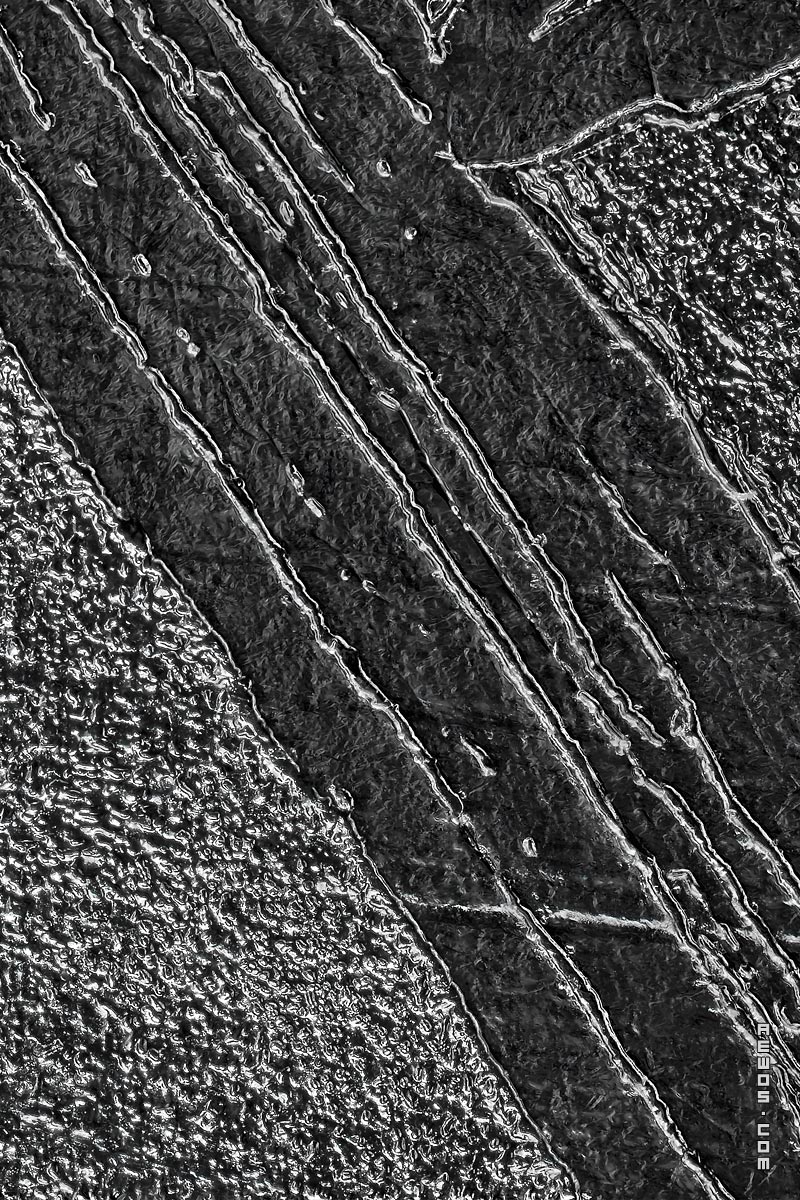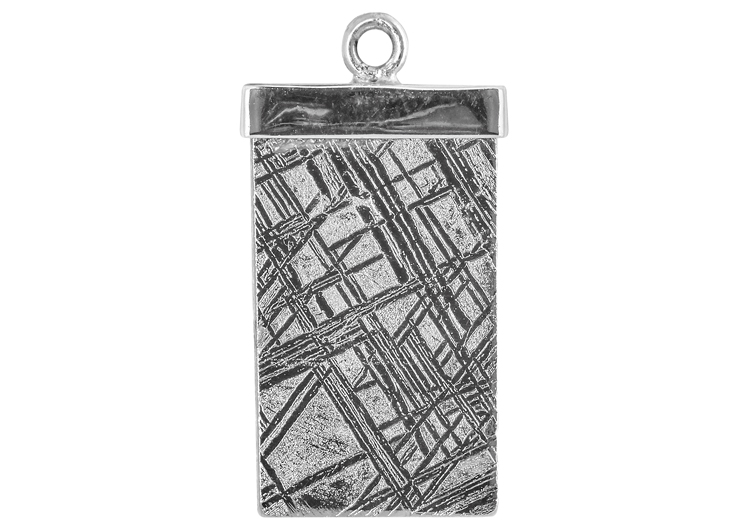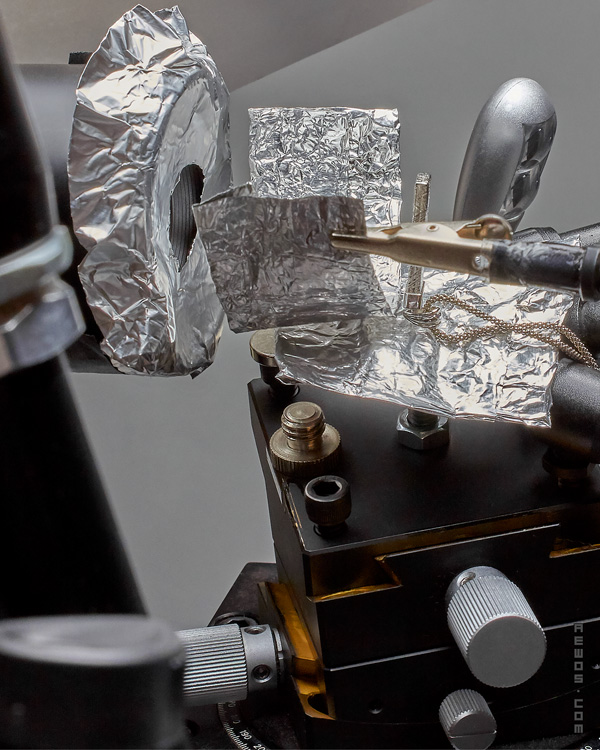GIBEON METEORITE
OVERVIEW
This is a photo of a Gibeon meteorite (iron, IVA class) fragment from Namibia, featuring the Thomson (Widmanstatten) patterns. I believe the darker areas are kamacite and lighter areas taenite/plessite (1, 2). Nitric acid is used to etch/reveal the patterns on the surface, with kamacite being more easily dissolved by the acid than taenite (3).
PHOTOGRAPHS


Detail view.
SPECIMEN

Side 1

Side 2

Approximate Photo Location (Side 1)
PHOTOGRAPH DETAILS
Magnification: ~3.6X
Field of view: ~1/4” x 3/8“ (6.7mm x 10.0mm)
Images in focus stack: 42
ADDITIONAL INFORMATION
The Gibeon meteorite landed in present-day Namibia possibly 5,000-30,000 years ago (5). It is estimated to have been larger than 3m before it broke up in the atmosphere, and could have originally been larger than 600km during the early stages of the formation of the solar system (4, 6). The illustration below shows the octahedral crystal structure of the meteorite. (An octahedron has eight faces, as if you connected two pyramids at their bases. If you imagine each face of the octahedron as a plane, you have four unique orientations, as opposite faces are parallel)(8). The taenite forms along (parallel) to these four unique directions/planes. It also serves as a boundary for the growth of the kamacite (7). The crystallization process/formation of the patterns occurs between a specific range of temperatures as the asteroid slowly cools in space (6, 8). It takes hundreds of thousands, if not millions of years for the crystals to form (7). The exact appearance of the Thomson patterns is determined by the plane on which the meteorite is cut (7, 8). For example, if you cut perpendicular to the octahedron’s axis (e.g., cutting off the top of the pyramid shape as shown in figure II), the patterns will intersect at right angles. If you cut parallel to a face (figure III), the patterns will intersect at 60/120 degree angles (8). The photographed specimen was cut at a different angle that these (which I can’t quite visualize at the moment) :). The image below the illustration shows the specimen and setup for the photo. The fragment has a shiny metallic appearance. The lighting determines whether the kamacite is light/taenite is dark or vice-versa.


REFERENCES
1. Nowell, M. (2015). Space rocks rock! Retrieved from EDAX.
2. Hogue, F., and Sheybany, S. (2002). A comparative look at microstructures of iron meteorites. Microscopy Microanalysis, 8(Suppl. 2). Retrieved from Cambridge University Press.
3. Hartman, R. (2002). Etching iron meteorites (or…”the myth of nitric acid”). Retrieved from the Meteorite Times Magazine.
4. Buhl, S. (n.d.). Gibeon iron meteorites: Part 1: Discovery, history, and study. Retrieved from Meteorite Recon.
5. Buhl, S. (n.d.). Gibeon iron meteorites: Part 4: Research after Buchwald. Retrieved from Meteorite Recon.
6. Buhl, S. (n.d.). Gibeon. Retrieved from Meteorite Studies.
7. Irons. (n.d.). Retrieved from the Utas Collection of Meteorites.
8. Oskay, W. (2014). A fragment of muonionalusta. Retrieved from the Evil Mad Scientist Laboratories.
Copyright © 2016–2019 by Aaron-Emile W. Osborn, all rights reserved.
